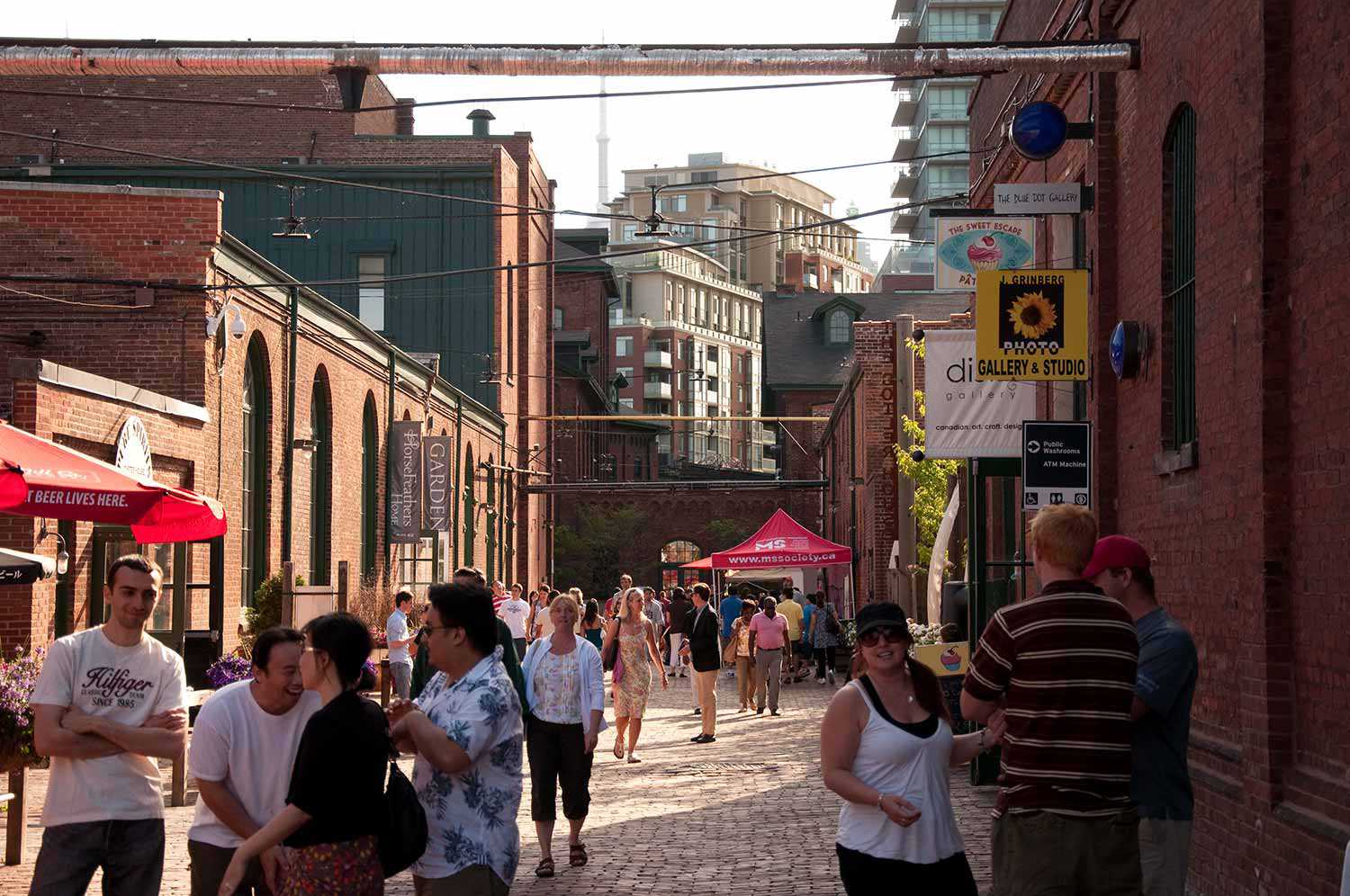Sometimes, individual properties have cultural heritage value but the surrounding properties may not. In many instances, however, whole neighbourhoods, streetscapes or areas may be significant. These areas are noteworthy not only because of the buildings, but also because of the streetscape features – trees, open spaces, patterns of historical development, vistas and even typography – collectively forming a distinct and integrated character that can be conserved through heritage conservation district designation.
A Heritage Conservation District (or HCD) – defined under Part V of the Ontario Heritage Act – is a geographically defined area within a municipality that is noted for its distinct heritage character. Through the adoption of a district plan, guidelines and policies, a municipality is able to guide future change. Ontario’s first HCD bylaw, Meadowvale Village HCD, was established in Mississauga in 1980.
Some statistics about heritage conservation districts:
over 7,300 properties have been designated under Part IV (Section 29) of the Ontario Heritage Act
228 municipalities have enacted one or more Part IV (OHA, section 29) designation bylaws under the Ontario Heritage Act
133 Heritage Conservation Districts (HCDs) have been approved and are in full force and effect under Part V (OHA section 41)
approximately 23,000 properties are located within HCD boundaries
53 Ontario municipalities have at least 1 HCD in full force under the Ontario Heritage Act
8 properties have been designated by the Minister for archaeological reasons under Part VI of the Ontario Heritage Act.
Heritage Conservation Districts vary in size. Although most HCDs are defined by a number of properties that form a character area, a single property – usually of a complex nature – may also be an HCD. For example, Fort York in Toronto is designated as an HCD. The largest HCD in Ontario is the combined North and South Rosedale HCDs, with a total of 1,800 properties, mostly residential.
Heritage Conservation Districts also vary in character. HCDs conserve areas of interest such as residential, commercial, combination of residential/commercial, institutional, rural and “main street,” and they often incorporate natural heritage features such as green open space, trees, parkland and waterways. Each HCD is distinct and is defined by the varied qualities of the natural and cultural heritage resources within its boundary.

